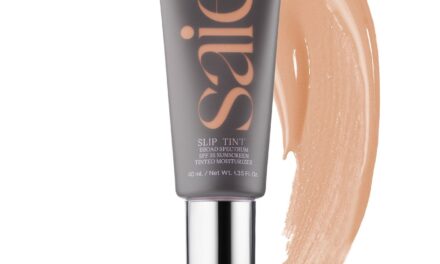
In the new millennium, ESSENCE is in her prime. In spite of the reluctance to highlight the emerging genre of hip-hop, the publication eventually got on board. “The 2000s brought with them growth and drastic change for Black women,” said ESSENCE Ventures President and CEO Caroline Wanga.
The nation would be rocked to its core by national tragedy, with 9/11 taking place in 2001, and the 2000 stock market crash, a direct result of the bursting of the dotcom bubble. Nonetheless, ESSENCE was at its peak—the growth of ESSENCE Festival expanded the brand’s reach, and the magazine was upholding Black women and covering important issues as it pertained to the Black community.
However, the competition in the publication industry was bubbling up, as VIBE became a formidable competitor. So founding partner Ed Lewis, showed interest in purchasing it, as a potential addition to the growing ESSENCE brand. Lewis went to meet with Don Logan, the then-president of Time Inc., and instead of focusing on purchasing VIBE, the conversation pivoted to Time Inc.’s interest in investing in ESSENCE. Logan initially wanted to buy 10 percent of ESSENCE, which then increased to 50 percent, to which Lewis declined, in fear tat readership would not approve of partial ownership from a larger, white company. The two negotiated a 49 percent deal, and the company would maintain the remaining 51. Time Inc. paid $143 million for the 49 percent share of the magazine.
Though there was some disappointment from readers from the buyout, it was Editor-In-Chief Susan L. Taylor who helped to press the brand forward, though she would step down in 2000, following a nearly two decade reign. Monique Greenwood was her successor, brought on by Taylor herself. While Taylor stepped out of the EIC role, she remained an integral part of the magazine’s success, becoming the Editor-At-Large, in which Greenwood reported directly to her.
The magazine celebrated its 30th anniversary in May of 2000, which was a standout cover featuring Queen Latifah, Halle Berry, Loretta Devine, Michael Michele, and more powerful Black women of the time, making it a rare collectors item. However, the climate for magazines targeting Black women became fierce, and other magazines began to skew much younger, and ESSENCE struggled in attracting advertisers.
The reluctance to embrace hip-hop was holding the publication back—and prior to fully opening up to the genre that was abrasive and objectifying women, ESSENCE took the opportunity to pen a letter to rapper Lil Kim to discuss her representation of Black women. Needless to say, the article didn’t fare well. The magazine reached an internal stalemate, battling between skewing the age demographic lower to reach a younger audience, and the older readership leaving with their feet. The magazine struggled on newsstands because younger women simply weren’t reading ESSENCE.
Greenwood lasted at ESSENCE for just one year, before Diane Weathers would take her place in 2001, also brought on by Taylor.
Weathers took a different approach in her attempts to extend the purview of ESSENCE. Enter Suede, the fashion-focused little sister to ESSENCE. However, the magazine only lasted four issues due to Time Inc. bringing in Suzanne Boyd who was seemingly out of touch with the Black woman audience.
In 2004, Time Inc. approached Lewis about purchasing the remaining 51 percent of ESSENCE, and the deal was closed in 2005 for $190,000,000. “It was really traumatic,” said Teresa Mastin, Department Chair for Advertising and Public Relations at Michigan State University. “It was traumatic in the Black community, it was traumatic for Black women, mostly in thinking, ‘they don’t understand us, they don’t respect us, they don’t know us.’”
With the complete buyout from Time Inc., Michelle Ebanks is promoted to president of the company, and Angela Burt-Murray would take over as editor-in-chief in 2005. Despite ESSENCE having its own EIC, Martha Nelson, the head editor of the People Entertainment Group would make her own changes to the magazine. “It was a Black magazine, but it wasn’t a Black owned company,” said Mikki Taylor. With Burt-Murray as EIC, the magazine had a more male, patriarchal celebrity focused lens. Everyone from T.D. Jakes, Steve Harvey and Tyler Perry had a column in the magazine.
Hurricane Katrina hit New Orleans, Louisiana in August 2005. Being that the coveted musical festival had been hosted in New Orleans every year since its inception in 1995, naturally, the city had become a second home to the legacy brand. To assist in relief efforts, ESSENCE raised $1 million for a hurricane relief fund, to send resources to victims. With the devastation that the natural disaster brought to New Orleans, it was impossible to host the music festival in the city that year, bringing it to Houston for its first (and only) time.
A year later, the festival would return to its original home. “As you can imagine, returning to New Orleans post-Katrina was psychologically a really important moment. It was a sacredness to returning to those grounds,” said Wanga.
At that festival, then-Senator of Chicago Barack Obama would take the stage making his bid as a presidential candidate. The following year, he would be inaugurated as America’s first Black president, and ESSENCE was at the forefront of that coverage. The Obamas would grace the cover of several ESSENCE magazines, as leadership wanted to really cultivate a relationship with the first Black family.
As Taylor and Lewis’ last duties in office, they were able to make waves working with the Obamas, both Barack and Michelle, in creating meaningful narratives about their power. Taylor stepped down in 2008, giving the younger editors an opportunity to take the reins of what ESSENCE could be. Taylor stepping down would mark the end of an iconic era, filled with purpose, namely Black women.





